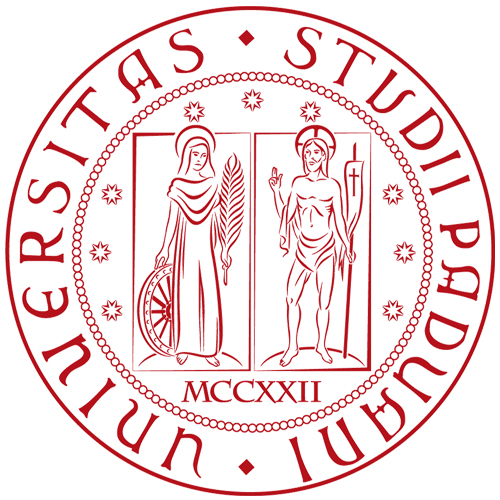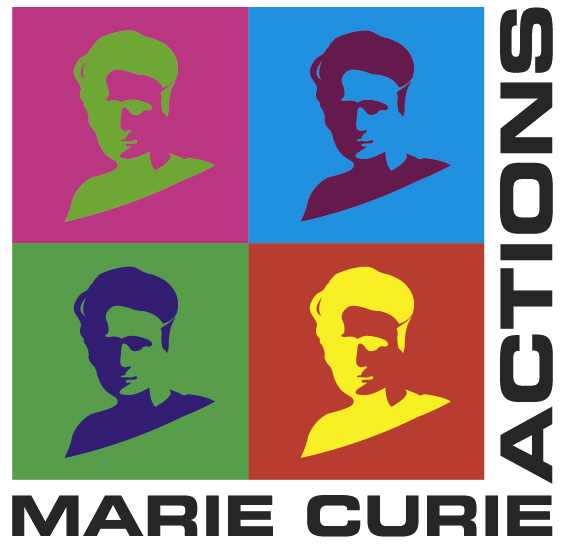Featured
PHRC030 : Dedication to Arsinoe Philadelphos, Palaipaphos - Cyprus (270-240 BC) Dedication
34.707430,32.573902This plaque, now lost, contained the sole dedication to Arsinoe Philadelphos written on marble known from the Paphos area. Despite this material, which was rare and expensive in Cyprus, the inscription is of very poor quality and presents various examples of phonetic writing and spelling mistakes. The plaque was probably attached to a small altar or another cultic object dedicated by a private donor in the sanctuary of Aphrodite Paphia.
Permant ID http://s.phrc.it/phrc030
Images:
Photo 1: Photo of the sanctuary of Aphrodite at Kouklia; via Wikimedia Commons ...
PHRC029 : Dedication of the royal collaborator Dionysodoros to Attalos I, Pergamon - Mysia (230-197 BC) Dedication
39.119662,27.167783This marble block was the base of the statue of a dancing Satyr dedicated to Dionysos and King Attalos I by Dionysodoros, a top-ranking member of the Pergamon army and court. The finely inscribed dedicatory epigram testifies to the intellectual activity of the Pergamon court under Attalos I and to the role Dionysos played in it as a god of art, banquets, and of mystery cults. Found reused in the foundations of a late-Hellenistic or early-Imperial building not far from the Asklepieion, this stone and the statue it bore may have originally stood in a building along the Sacred Way connecting the city to the Asklepieion, or perhaps even inside the Asklepieion itself. The paleography and prosopography of the inscription point to the 220s as the most plausible date for the dedication. This marble block is what remains of a statue base which was dedicated to Eumenes II together with an altar of the king in the precinct of Athena. The stone was later reused in the Byzantine walls situated south of the sanctuary's terrace. The identification of the name of the recipient king (in lacuna) is made possible by the presence of the formula Theos Soter: this became a common denomination of Eumenes II after his death (158) whereas Attalos I was always referred to only with the epithet Soter. This altar is decorated with a rosette surrounded by two bucranes and presents an inscription of good quality but with the uncommon detail of a cursive shape of omega, which may be interpreted as the influence of cursive writing on a private dedication. The stone was found in the neighbourhood of Gurnellia, situated south-east of the hill of Pergamon, in an area which was not yet urbanized in the second century, so that the original location of the altar remains unknown. The chronological limits of the dedication are provided by the use of the epithet Soter (mid-180s) and by the death of Eumenes II (159/8), after which the king was referred to with the denomination Theos. This finely inscribed altar was posthumously dedicated to Eumenes II by the cultic association of the Bakchoi. Its original location was probably the precinct of Athena on the acropolis, a prominent space for the royal representation and identity of the Attalids. The inscription testifies to the appropriation by a private religious group of the official ideological link associating the Attalid dynasty with Dionysos. Moreover, the quality of the inscription as well as the use of the rare literary epiclesis Euastes for Dionysos confirm that the Bakchoi were members of the Pergamon elite, perhaps enjoying a direct link with the royal court and with its cultural and religious life. This altar, decorated with an oak wreath, a Capricorn and a cornucopia, was dedicated to Augustus by the leader of the Boukoloi (‘Cowherds), a private cultic association venerating Dionysos Kathegemon in Pergamon. The dedication was probably accomplished soon after the Roman Senate granted Octavian the title Augustus (Greek Sebastos) and the ‘corona civica’ and testifies to the contemporaneous enthusiasm for the pacification of Asia Minor under the early Principate. The altar, which was provided with a hollow top able to receive libations and perfume offerings, was part of the cultic tools of the association, which met in a luxury mansion erected on the south-western slope of the Pergamon hill, the so-called House with the ‘Podiensaal’. This dedication probably constitutes the... Found in a Byzantine wall near the so-called ‘cult room’ of a Hellenistic elite house on the southern slope of Pergamon, this rectangular altar might testify to the survival of the cult of Attalos I after the end of the dynasty. The writing of A with both a bowed and a broken crossbar further strengthens the hypothesis that this altar was dedicated after the death of Attalos I. This rectangular altar of Attalos I is one of the two found among the Byzantine structures that were built within the ruins of the ‘House with the Podiensaal’, a luxury peristyle house erected in the mid-2nd century and later used, with several changes, until the end of Antiquity. While theses specimens are per se not different from the other altars of the the cult of Attalos I Soter in Pergamon, their find spot is particularly intriguing as it could testify to the survival of the cult of this king after the end of the dynasty, when the house was in use. This fragmentary rectangular altar of Attalos I was dedicated inside the precinct of Demeter on the southern slope of the Pergamon hill. It was probably used for libations and the burning of perfumes. The paleographic detail of A with bowed crossbar suggests a date of dedication between the end of Attalos’ reign and the beginning of Eumenes II’s. This particularly thin rectangular altar was probably erected in the Upper Agora of Pergamon, possibly in relation to one of the sacred (Zeus’ sanctuary) or administrative buildings in the western (nomophylakion) and eastern part of the agora. The writing is irregular and characterized by a shape of A with broken crossbar which suggests a date in the 2nd cent. and therefore a posthumous cult. The donor had only his personal name inscribed, without the name of the father and the function, a solution which finds parallels in contexts where the author of a dedication was easily recognisable by the members of a community. Considering the sacred and administrative functions of the buildings in the agora, Artemidoros might therefore have been a priest or a magistrate of Pergamon. This altar was dedicated by a priestess in the sanctuary of the Mother of the gods in Mamurt Kale, on the top of the mount Yund Dağ situated about 30 kilometers SE of Pergamon. The altar, the biggest among the specimens of Attalid ruler cults at Pergamon, was probably erected during the reign of Attalos and made the king a synnaos theos of the goddess. It was big enough to possibly host small animal sacrifices besides libations and censing rituals. Herakleia near Latmos is the only city in Asia Minor besides Pergamon having delivered small objects with a dedication to Attalos I. This fragmentary altar, probably made with local marble, bears a text showing clear signs of cursive writing, which may point to a private context of dedication. Already reused as a tombstone in Antiquity, the altar was discovered among the blocks of a stone wall near the Bafa Lake. It makes the pair with another block which can be interpreted as a statue basis of Attalos I. Both inscriptions probably date to the 230s, when Attalos I managed to temporarily impose Pergamon as a regional power in Asia Minor. This finely inscribed and decorated altar is the only marble specimen from the Pergamon corpus of small altars of Attalos I Soter. Like the other small altars of the Attalid ruler cult from Pergamon, the rough back surface and its proportions suggest that it was meant to be placed against a wall or in a niche. This altar was found during the excavation of the theatre, a paramount location for the life of Pergamon since not only spectacles but also assemblies were held there. A dedication during the reign of Attalos I is plausible, in particular after the military successes by which he obtained the royal title and the epithet Soter. This block bears one of the three preserved genitive dedications to Arsinoe Philadelphos from Paros. It was probably inserted in a bigger structure, an altar or a wall. This small but relatively thick slab of local stone has delivered one of the three genitive dedications to Arsinoe Philaldephos discovered on Paros. The poor quality of this specimen is revealed by the use of both sides for the same text: the carver probably started writing the dedication on one side but was unsatisfied with his work (perhaps because of a careless spacing between letters), left this side unfinished and wrote the text on the other surface. The stone was probably part of a small altar. The inscription records the dedication of a nymphaeum, together with its reservoir, to King Ptolemy IV and Queen Arsinoe III, by the commander of the Ptolemaic garrison at Itanos, a Roman called Lucius. The dedication was made before 209 BC, when the son of the royal couple, the future Ptolemy V, begins to be mentioned after his parents. The text bears the first explicit attestation of the Ptolemaic garrison at Itanos. This dedication to Arsinoe Philadelphos is inscribed on a small cylindrical altar, a common support for the cults of the Ptolemies in Cyprus. Among the inscribed dedications to Arsinoe found in the Paphos area, this is the sole specimen having been discovered in the new city, during the excavations of the Roman Orpheus House. The altar bears the same dedication on both sides. The text on the first side has remained unfinished: it was abandoned probably due to a mistake of the carver in the spacing between letters; the same dedication was then fully inscribed on the opposite side of the shaft. The block, which bears a well carved dedication to Arsinoe Philadelphos, was found in a context of reuse during the excavations at the temple of Apollo Pythios. It probably originally belonged to the nearby sanctuary of the Egyptian deities, which was frequented by members of the Ptolemaic garrison and hosted the ritual activities of the Basilistai. The stone might have been part of a larger structure (possibly an altar), or perhaps was inserted into one of the numerous rock-cut niches of the sanctuary, to indicate the function of an area specifically dedicated to the cult of the deified queen. This is the only extant specimen of the Ptolemaic oenochoae from Cyprus and the sole which does not depict the traditional ritual scene including a female figure performing a libation, the agyieus pillar, and an altar with akroteria. The particular features of this jug reasonably point to a local rather than Alexandrian production. Wine-pouring vessels with royal dedications were used in Ptolemaic ruler cults and were often included among the grave goods of their users. This was probably the case for this specimen too. The text, elegantly written on a stele of local limestone erected in the sanctuary of Athena Polias, is a decree of the city of Itanos establishing cultic honours for king Ptolemy III and queen Berenike II. The absence of the epiclesis Euergetes suggests a date before 243/2 BC. The king is praised for his euergetic and protective attitude toward the city, in continuity with his ancestors' policy. The cultic honours decreed by Itanos comprise the dedication of a sacred precinct of the royal couple in a park near a city gate and the celebration of a festival for the king's birthday.
PHRC028 : Dedication to Eumenes II, Pergamon - Mysia (158-133 BC) Dedication
39.131745,27.184077
Permanent ID http://s.phrc.it/phrc028
Images:
Photo 1: Drawing of the stone from IvP I 59
Photo 2: Plan of the medieval walls of the citadel, from AvP VIII.1 (IvP I)...
PHRC027 : Dedication to Eumenes II, Pergamon - Mysia (184-159 BC) Dedication
39.127265,27.180966
Permanent ID http://s.phrc.it/phrc027
Images:
Photo 1: Squeeze of the inscription, from...
PHRC026 : Dedication of the Bakchoi to Eumenes II, Pergamon - Mysia (158-133 BC) Dedication
39.131745,27.184077
Permanent ID http://s.phrc.it/phrc026
Images:
Photo 1: Photo of the altar, from...
PHRC025 : Dedication of the archiboukolos Herodes to Augustus, Pergamon - Mysia (27 BC - 14 AD) Dedication
39.128020,27.184460
PHRC024 : Dedication to Attalos I, Pergamon - Mysia (200-100 BC) Dedication
39.128020,27.184460
Permanent ID http://s.phrc.it/phrc024
Images:
Photo 1: Photo of the altar, from Radt 1989, p. 204-205, photo 1
Photo 2: Plan of the House with the 'Podiensaal' (Late Hellenistic period); photo based on Schwarzer (2008), p. 49, photo 8, modified for Caneva 2020
...
PHRC023 : Dedication to Attalos I, Pergamon - Mysia (240-100 BC) Dedication
39.128020,27.184460
Permanent ID http://s.phrc.it/phrc023
Images:
Photo 1: Photo of the altar, from Radt 1989, p. 204-205, photo 2
Photo 2: Plan of the House with the 'Podiensaal' (Late Hellenistic period); photo based on...
PHRC022 : Dedication to Attalos I, Pergamon - Mysia (200-150 BC) Dedication
39.127201,27.184219
Permanent ID http://s.phrc.it/phrc022
Images:
Photo 1: Drawing of the inscription, IvP I 45
Photo 2: Sanctuary of Demeter; via Wikimedia Commons...
PHRC021 : Dedication of Apollodoros to Attalos I, Pergamon - Mysia (197-133 BC) Dedication
39.130167,27.183817
PHRC020 : Dedication of the priestess Metris to Attalos I, Mamurt Kale (Pergamon) - Mysia (240-197 BC) Dedication
38.917185,27.428819
Permanent ID http://s.phrc.it/phrc020
Images:
Photo 1: Photo of the altar; photo R. Rohrer ©D-DAI-ATH-Pergamon-1448, courtesy of the Deutsche Archäologische Institut (DAI)
Photo 2: Detail of the inscription; photo R. Rohrer ©D-DAI-ATH-Pergamon-1449, courtesy of the Deutsche Archäologische Institut (DAI)
PHRC019 : Dedication to Attalos I, Herakleia near Latmos - Karia (240-197 BC) Dedication
37.501842,27.525011
Permanent ID http://s.phrc.it/phrc019
Images:
Photo 1 : A section of the Hellenistic walls of Herakleia; photo J. Hansen via...
PHRC018 : Dedication to Attalos I, Pergamon - Mysia (240-197 BC) Dedication
39.131881,27.182911
Permanent ID http://s.phrc.it/phrc018
Images:
Photo 1: Photo of the altar, from Bielfeldt 2010, p. 155, fig. 15
Photo 2:...
PHRC017 : Dedication to Arsinoe Philadelphos, Paros - Cyclades (270-240 BC) Dedication
37.08579,25.150728
Permanent ID http://s.phrc.it/phrc017...
PHRC016 : Dedication to Arsinoe Philadelphos, Paros - Cyclades (270-240 BC) Dedication
37.08579,25.150728
Permanent ID http://s.phrc.it/phrc016
Images
Photo 1: Drawing of the stone...
PHRC015 : Dedication of a nymphaeum to Ptolemy IV and Arsinoe III, Itanos - Crete (220-209 BC) Dedication
35.263304,26.263366
Permanent ID http://s.phrc.it/phrc015
Images:
Photo 1: the stone; Herakleion Museum, Inv. No. 64, copyrighted image. Courtesy of the Greek Ministry of Culture and Sports, Department of Antiquities
Photo 2: view of the southern bay of Itanos (Ptolemaic harbour) from the estern acropolis (S. Caneva, CC-BY-SA 4.0)...
PHRC014 : Dedication to Arsinoe Philadelphos, Nea Paphos - Cyprus (270-240 BC) Dedication
34.757002,32.403648
Permanent ID http://s.phrc.it/phrc014
Images:
Photo 1: view of the site of the Orpheus House, Maloutena (S. Caneva, CC-BY-SA 0.4)
Photeo 2: plan of the archaeological...
PHRC013 : Dedication to Arsinoe Philadelphos, Thera - Ciclades (270-240 BC) Dedication
36.363043,25.477900
Permanent ID http://s.phrc.it/phrc013
Images:
Photo 1: detail of the inscription, from IG XII 3 462
Photo2: view of the sanctuary (S. Caneva, CC-BY-SA 4.0)...
PHRC012 : Oenochoe of King Ptolemy IV, Kourion - Cyprus (221-204 BC) Dedication
34.6662275,32.883723
Permanent ID http://s.phrc.it/phrc012
Images:
Photo 1: photo of the vase, from Burr Thompson 1973, fig. 141
Photo 2: detail of the inscription, from Burr Thompson 1973, p. 171...
PHRC011 : Decree of the city of Itanos honouring King Ptolemy III and Queen Berenike II - Crete (246-243 BC) Decree
35.263460,26.261997
Permanent ID http://s.phrc.it/phrc011
Images:
Photo 1: Photo of the stone; Herakleion Museum, Inv. No. 65, copyrighted image. Courtesy of the Greek Ministry of Culture and Sports,...




